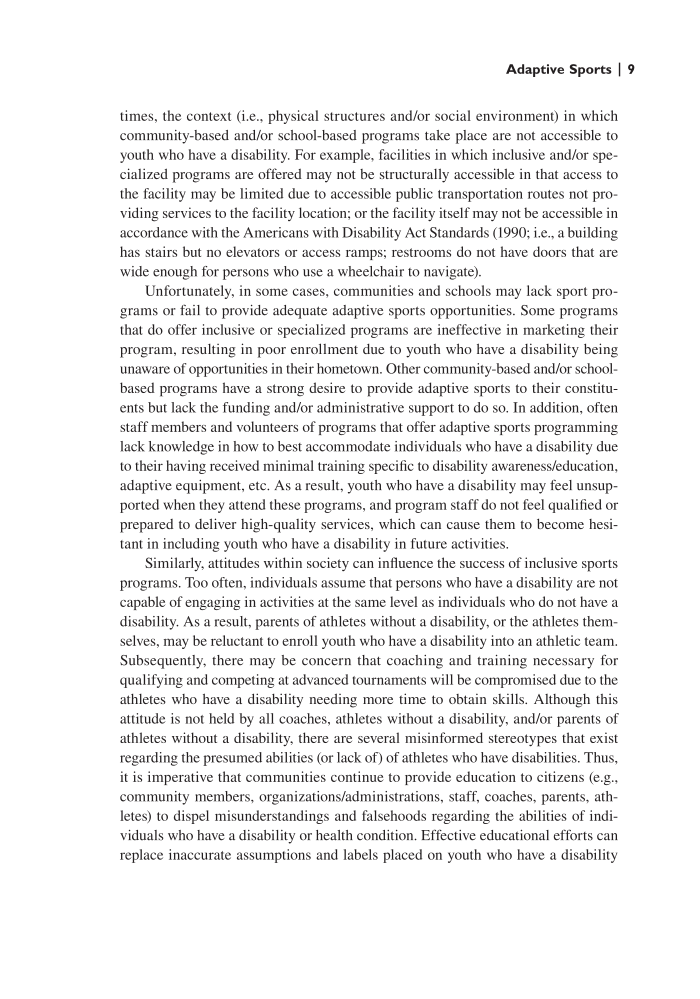Adaptive Sports 9 times, the context (i.e., physical structures and/or social environment) in which community-based and/or school-based programs take place are not accessible to youth who have a disability. For example, facilities in which inclusive and/or spe- cialized programs are offered may not be structurally accessible in that access to the facility may be limited due to accessible public transportation routes not pro- viding services to the facility location or the facility itself may not be accessible in accordance with the Americans with Disability Act Standards (1990 i.e., a building has stairs but no elevators or access ramps restrooms do not have doors that are wide enough for persons who use a wheelchair to navigate). Unfortunately, in some cases, communities and schools may lack sport pro- grams or fail to provide adequate adaptive sports opportunities. Some programs that do offer inclusive or specialized programs are ineffective in marketing their program, resulting in poor enrollment due to youth who have a disability being unaware of opportunities in their hometown. Other community-based and/or school- based programs have a strong desire to provide adaptive sports to their constitu- ents but lack the funding and/or administrative support to do so. In addition, often staff members and volunteers of programs that offer adaptive sports programming lack knowledge in how to best accommodate individuals who have a disability due to their having received minimal training specific to disability awareness/education, adaptive equipment, etc. As a result, youth who have a disability may feel unsup- ported when they attend these programs, and program staff do not feel qualified or prepared to deliver high-quality services, which can cause them to become hesi- tant in including youth who have a disability in future activities. Similarly, attitudes within society can influence the success of inclusive sports programs. Too often, individuals assume that persons who have a disability are not capable of engaging in activities at the same level as individuals who do not have a disability. As a result, parents of athletes without a disability, or the athletes them- selves, may be reluctant to enroll youth who have a disability into an athletic team. Subsequently, there may be concern that coaching and training necessary for qualifying and competing at advanced tournaments will be compromised due to the athletes who have a disability needing more time to obtain skills. Although this attitude is not held by all coaches, athletes without a disability, and/or parents of athletes without a disability, there are several misinformed stereotypes that exist regarding the presumed abilities (or lack of) of athletes who have disabilities. Thus, it is imperative that communities continue to provide education to citizens (e.g., community members, organizations/administrations, staff, coaches, parents, ath- letes) to dispel misunderstandings and falsehoods regarding the abilities of indi- viduals who have a disability or health condition. Effective educational efforts can replace inaccurate assumptions and labels placed on youth who have a disability
Document Details My Account Print multiple pages
Print
You have printed 0 times in the last 24 hours.
Your print count will reset on at .
You may print 0 more time(s) before then.
You may print a maximum of 0 pages at a time.









































































































































































































































































































































































































































